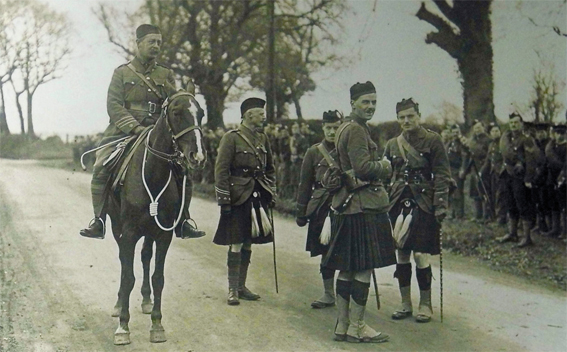
Charles was commissioned into the Army on 14th September 1914 as a temporary Second Lieutenant with the 6th Cameron Highlanders. On 9th July 1915, the battalion left their billets in Chiseldon and marched to the railway station at nearby Swindon for their journey to Folkestone. They boarded the SS Victoria and landed in Boulogne at 01:00 the following day. Ten days later, the battalion was in billets at Hesdigneul-lès- Béthune when they were sent to the front line for familiarisation training and in support of the 20th Battalion London Regiment who were in trenches at Vermelles.
On 25th September, Charles was at the front line in the same trenches at Vermelles for the Battle of Loos. The war diary records:
“Hot tea issued to men at about 03:00 am. At 05:50 am battalion moved slowly up towards the firing line. At 06:30 am the attack started and the battalion occupied the fire trenches.”
On the 27th September, they were relieved and returned to billets in Mazengarbe. The battle had lasted three days and was deemed a failure, with the battalion suffering considerable casualties: estimated at four-hundred men and seventeen officers.
By April 1916, Charles had returned to Britain and was attached to the Reserve Regiment of Cavalry, the training regiments for new volunteers or conscripts. His medal card shows that he served with the 14th Hussars whose training regiment was the 13th Reserve Regiment of Cavalry, based in Colchester. Charles was posted to India in 1918, where he remained for the rest of the war.
When he returned to Britain, Charles married Phyllis Rosie Palin in London in 1921. They had a son named John Alastair. Charles’ parents, Charles and Caroline, are buried in Melton Old Church and Charles himself died in 1962, in Gloucestershire. For his war service, he received the 1914-15 Star and the British War and Victory Medals.
